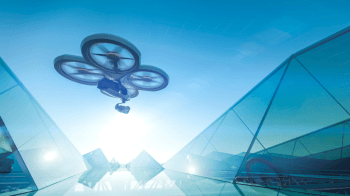Drones, once confined to military applications and hobbyist pursuits, have rapidly evolved into powerful tools with diverse applications across various industries. Simultaneously, artificial intelligence (AI) has made unprecedented strides, transforming the way we interact with technology. The convergence of drones and AI has opened up a new realm of possibilities, revolutionizing industries such as agriculture, transportation, surveillance, and delivery services. In this article, we will explore the profound connection between drones and AI, the benefits it brings, and its potential for the future.
Enhanced Autonomy and Navigation
One of the primary ways AI has revolutionized drones is by enhancing their autonomy and navigation capabilities. Through AI algorithms, drones can analyze real-time data from sensors and cameras to make intelligent decisions while in flight. Machine learning algorithms enable drones to adapt to changing environmental conditions, avoid obstacles, and optimize flight paths, all without human intervention. This level of autonomy empowers drones to operate efficiently and safely, expanding their capabilities for tasks such as aerial inspections, search and rescue operations, and precision agriculture.
Advanced Data Collection and Analysis
Drones equipped with AI algorithms are capable of collecting vast amounts of data in a short span of time. With onboard cameras, sensors, and AI-powered computer vision, drones can capture high-resolution images, record videos, and gather valuable sensor data. AI algorithms can then analyze this data to extract actionable insights, identify patterns, and detect anomalies. In agriculture, for example, drones equipped with AI can analyze crop health, identify areas requiring irrigation or pesticide treatment, and optimize overall farm management. Similarly, in infrastructure inspections, drones can quickly identify structural weaknesses, reducing the need for costly and time-consuming manual inspections.

Improved Efficiency and Cost-effectiveness
The integration of AI and drones has led to significant improvements in efficiency and cost-effectiveness across various industries. In agriculture, AI-powered drones can precisely apply fertilizers, pesticides, and water, reducing waste and improving crop yields. In logistics, drones equipped with AI algorithms can optimize delivery routes, reducing transportation costs and improving last-mile delivery. Moreover, AI-enabled drones can monitor and maintain critical infrastructure such as power lines, oil pipelines, and bridges, minimizing downtime and expensive repairs.
Enhanced Safety and Security
Drones equipped with AI algorithms are transforming the landscape of safety and security. In surveillance and law enforcement, AI-powered drones can autonomously monitor public spaces, detect suspicious activities, and identify potential threats. AI algorithms can analyze video feeds in real-time, automatically flagging unusual behavior or objects. In disaster response scenarios, drones can aid in search and rescue operations by autonomously scanning large areas, detecting survivors, and transmitting their locations to responders. By augmenting human capabilities, AI-driven drones play a vital role in safeguarding communities and minimizing risks.
Future Potential
The connect between drones and AI continues to evolve, presenting exciting possibilities for the future. As AI algorithms become more sophisticated, drones will become even more autonomous, enabling them to operate in complex environments with minimal human intervention. Additionally, advancements in AI-powered computer vision will enhance the drone’s ability to recognize objects, classify scenes, and even understand human gestures and emotions. Furthermore, the combination of AI and swarm intelligence will enable coordinated group behavior among drones, opening up new opportunities for collaborative tasks, such as large-scale mapping, environmental monitoring, and disaster response.

Conclusion
The synergy between drones and AI has ushered in a new era of technological advancements. From increased autonomy and improved data analysis to enhanced safety and security, the integration of AI algorithms has transformed drones into invaluable tools across numerous industries. As the technology continues to progress, the future holds immense potential for further innovations and applications. Harnessing the power of AI-driven drones will
You can find out more about our unmanned aircraft system services here.


